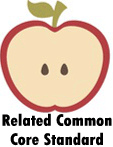Balanced Literacy Worksheets

Balanced Literacy is an approach of series of methods used by teachers to help students learn how to read and write. This program came to light in the mid-1990s. It is thought be a blend of both phonics and whole language approaches. Each of those approaches seem to produce well groomed readers and writers, yet both programs lack a subtle facet. The whole language approach often produces great readers that have difficulty spelling words. The phonics approach often produces excellent writers that have difficult comprehending what they read. The idea behind balanced literacy is that it would help fill in the gaps for teachers and their students. This series of worksheets you help students discover the heights of using this technique in a regular setting.
Balanced Literacy Worksheets:
Text Features -
Cut and glue to match each image to its description.
What's the Author's Purpose? -
Print the page on card stock. Cut out the wheel and the pointer. Attach the pointer to the wheel with a brass paper fastener.
Types of Books -
Match each text type to the reasons that author's write
and the text features you are likely to find in each kind of book.
Text Types Spinner -
Read short passages aloud to students. Have students
spin the wheel and point to the text type of each
passage that you read.
Right On -
Write about the best day you have ever had.
What happened? Why was it go great?
The Daily 5 -
Put a sticker on the
calendar every day as
you do your work.
Character Traits -
An external character trait is one that you can see displayed on the
outside of a character, for example, carelessness may be revealed
by sloppy dress, etc. An internal character trait is one that is revealed
through the character’s thoughts, feelings, actions, or dialogue.
Word Work Spinner -
A great way to decide if you should spell it, define it, use it, or write it.
Reading Across Genres -
Activity can be completed as teacher reads, during shared
reading, or during independent reading. Write the title of each book and
answer the questions.
Insect Me -
A great page to help you get your thoughts out.
What Are the Common Elements of a Balanced Literacy Program?
These programs are often rooted in cooperative reading and reading analysis. The common approach is to read a larger body of work as a class and have clear marked discussions as key turning points in a work. An instructor aim here is to encourage students to think while they read, which is not self-apparent for most students. This encourages readers to become active readers as they tackle new works. Many teachers find that as students become more comfortable with this type of activity, the level of the discussions and the depth of the analysis becomes more sophisticated. It is often helpful to re-read the same sections and analyze the work for differing parameters.
The reading mini-lesson technique is often used in these types of programs. This is a whole group instruction format where students are given precise and overt instruction. Each minilesson has a direct application of the text to the work of the student. The goal is once again heighten writing ability and reading fluency. This will often break off or end with some aspect of independent reading where students will choose their own book as an extension of what was reviewed in the min-lesson. This real helps the goal of the lesson set in.
A well-structured Balanced Literacy program will ground itself in consistent and constant evaluation of students. This often begins with teacher meeting individually with students in order to track their progress and gauge where they are and where they need to be. These types of programs often cite a goal or a series of them for each individual student and they see where they are at each point. These types of conferences can take many different forms whether it be in a formal testing situation or informal journal type of assessment.
As teacher proceed with their differing levels of assessment, they begin to commonalities between students and create small reading groups that all share similar levels of fluency and comprehension. These groups help teachers create a differentiated instructional program that is more tailored to their students’ individual needs. As these groups progress teachers track their progression through the use of formative assessment. These are more regularly applied to students and are found in the way of student journaling where they share their experiences with the work or teacher observations where teachers journal what they are experiencing in the presence of their students. A Summative assessment is often associated with this style of program. They usually are in the form of basic unit assessments or portfolios.
